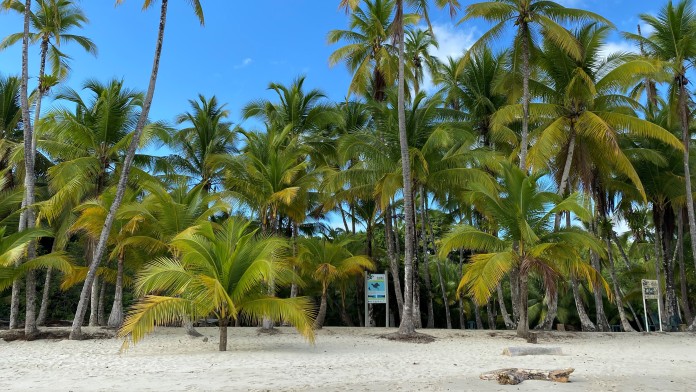As of: 01/2023
The Tropical Eastern Pacific covers an area of around 2 million square kilometres and includes the territorial waters and exclusive economic zones of the Latin American countries Costa Rica, Ecuador, Colombia and Panama.
The region is one of the global biodiversity hotspots: species threatened with extinction such as the scalloped hammerhead shark can be found here. Its extensive underwater mountain ranges have an influence on the migration routes of whales and other marine life and provide shelter for young animals. At the same time, the Tropical East Pacific is the livelihood of many people in the coastal regions who depend on fishing and tourism.
In order to contribute to the conservation and sustainable use of the marine resources of the Tropical East Pacific, KfW is supporting the project "Fondo Pacífico - Marine Conservation" with a grant of EUR 10 million on behalf of the German Federal Ministry for Economic Cooperation and Development (BMZ).

The Tropical East Pacific faces a variety of hazards. The effects of climate change and pollution from land-based waste are threatening this unique ecosystem. Overfishing and unsustainable or illegal fishing are a particular risk for marine species such as the endangered green sea turtle and deep-sea fish, which are important to fishery. Unwanted bycatch or inappropriate catch quotas lead to a decline in stocks and, not least, the loss of biodiversity.
In order to preserve the unique biodiversity of the Tropical East Pacific, Costa Rica, Ecuador, Colombia and Panama have currently designated eleven national marine protected areas covering an area of over 600,000 square kilometres. However, to ensure effective protection of species at the regional level, coordination between protected areas, especially with regard to control and surveillance and biodiversity monitoring, is needed. In addition, cooperation with the fisheries sector must be strengthened and the coordination and harmonisation of fishery management in the countries of the Tropical East Pacific must be expanded. The CMAR initiative plays an important role here as an association between the environmental ministries of the four countries.
The project, which is financed by KfW on behalf of the Federal Ministry for Economic Cooperation and Development (BMZ), aims to contribute to the conservation and sustainable use of marine resources in and between marine protected areas of the Tropical East Pacific. In doing so, it will support the implementation of the national development goals and the Biodiversity Convention.
The project is executed through the regional environmental fund PACIFICO. PACIFICO was founded in 2017 as a private fund to bundle the financing of measures for the protection of the marine resources of the Tropical East Pacific regionally and to make it available in the long term.
The project aims to fund at least ten individual projects with grants of up to USD 1 million through PACIFICO. The following results are targeted:
The selection of projects is coordinated by PACIFICO and is based on competitions for ideas. Projects will be selected that make a direct and measurable contribution to the conservation of endangered or commercially important species or aim at the sustainable use of fish stocks. In line with PACIFICO's orientation, the focus is on regional approaches that will be implemented in at least two of the four countries with a share in the Tropical East Pacific.
The project will also strengthen PACIFICO's capacity and its role as a knowledge and funding platform.
The direct target group is all persons actively involved in the implementation of the project. This includes, above all, the staff of the supported protected areas, local communities as well as representatives of state institutions and the private sector. The target group is estimated to be at least 5,000 people.
Indirect beneficiaries of the project are all inhabitants of the coastal region whose livelihoods depend on the ecological functions of the Tropical East Pacific.
The activities promoted within the framework of the project are intended to contribute to the conservation of biological diversity and fishery resources in the Tropical East Pacific. In cooperation with the relevant stakeholders, approaches are being developed to make fisheries more sustainable. The strengthening of marine protected areas in the region will go hand in hand with improved control and monitoring and cooperation between protected areas.
KfW's support will open up new opportunities for the PACIFICO environmental fund to raise funds so that it can establish itself as an important actor for marine conservation in the region in the long term.
The project contributes to the achievement of these following United Nations Sustainable Development Goals: